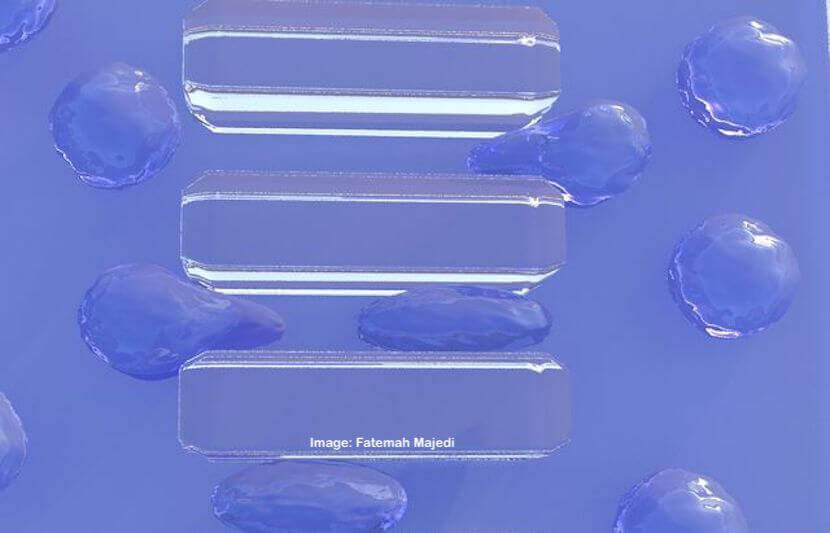UCLA researchers have developed artificial T lymphocytes, or T cells that are so close to human T cells that it could one day be used to treat cancer and other autoimmune diseases.
T cells are a type of white blood cell that plays a key role in fighting off specific germs.
They first mature in the thymus gland in the neck. When infection enters the body, they flow through bloodstreams to reach the infected areas.
Because they must not only squeeze in between small gaps and pores, but also fight off germs, T cells can deform to as small as one-quarter of their normal size and grow to almost three times their original size.
Natural T cells are very smart and adaptive, but that much more complex to mimic.
For a long time, for research and application purposes, researchers had to extract natural T cells from animals. However, even the extracted T cells are too delicate and cannot survive more than a week in laboratory conditions. As a result, many animals are needed to conduct such research.
But now, the UCLA researchers have been able to replicate the shape, size and flexibility of T cells that enable them to perform their basic functions of targeting and homing in on infections.
“The complex structure of T cells and their multifunctional nature have made it difficult for scientists to replicate them in the lab,” Alireza Moshaverinia, an assistant professor of prosthodontics at the School of Dentistry, said in a statement. “With this breakthrough, we can use synthetic T cells to engineer more efficient drug carriers and understand the behavior of immune cells.”
He led a cross-disciplinary team comprised of: Mohammad Mahdi Hasani-Sadrabadi, an assistant project scientist at the Samueli School of Engineering; graduate student Fatemah Majedi; Steven Bensinger, a professor of microbiology, immunology and molecular genetics; Ben Wu, a professor of dentistry and bioengineering; Louis Bouchard, an associate professor of chemistry and biochemistry; and Paul Weiss, a distinguished professor of chemistry and biochemistry
Their paper is published in the journal Advanced Materials.
Making synthetic T cells
The researchers needed to mimic both the form and function of natural T cells.
“We thought that if we can make some particles that mimic T cells in form and function we can do the experiments much easier and reduce the need for laboratory animals,” said Moshaverinia.
To mimic the form, the researchers used a microfluidic system, which focuses on the behavior, control and manipulation of fluids, typically on a submillimeter scale.
By combining mineral oil and an alginate biopolymer, a gum-like substance made from polysaccharides and water, they created microparticles of alginate, which replicate the form and structure of natural T cells.
Then, they collected the the microparticles from a calcium ion bath and adjusted their elasticity by changing the concentration of calcium ions in the bath.
To mimic the function, the researchers coated the synthetic T cells with phospholipids to copy human cellular membranes. Then, using a chemical process called bioconjugation, they linked the T cells with CD4 signalers, the particles that activate natural T cells to attack infection or cancer cells.
According to Moshaverinia, in the regular immunotherapy, patient’s own immune cells will be extracted from the blood, expanded in the laboratory, modified genetically and then injected into the patient. Then, based on the modification, these T cells can circulate through the body and help cure cancer or other diseases.
However, with their new development, researchers no longer need human T cells, but can make particles that are fully synthetic and programmed to deliver multiple therapeutics at once.
“We can regulate fate (e.g., degradation) of these particles in order to eliminate any potential unwanted side effects. These synthetic T cells can also be used as a model to better understand physical behavior of natural T cells and help researchers deal with them more effectively,” said Moshaverinia.
The next step
According to Moshaverinia, the behavior of synthetic T cells in the body also needs to be evaluated in-depth to confirm the possibility of using these particles for clinical applications.
The researchers suggest that their approach could be replicated to produce various types of artificial cells, such as natural killer cells or macrophages.
They hope their approach could be widely used for research on diseases and treatments to help scientists develop a database of a wide range of synthetic cells that mimic natural human cells.
“We are planning to develop and optimize a wide range of artificial cells including other immune cell types and see how we can manipulate them to deliver different therapeutic cargos,” said Moshaverinia.



